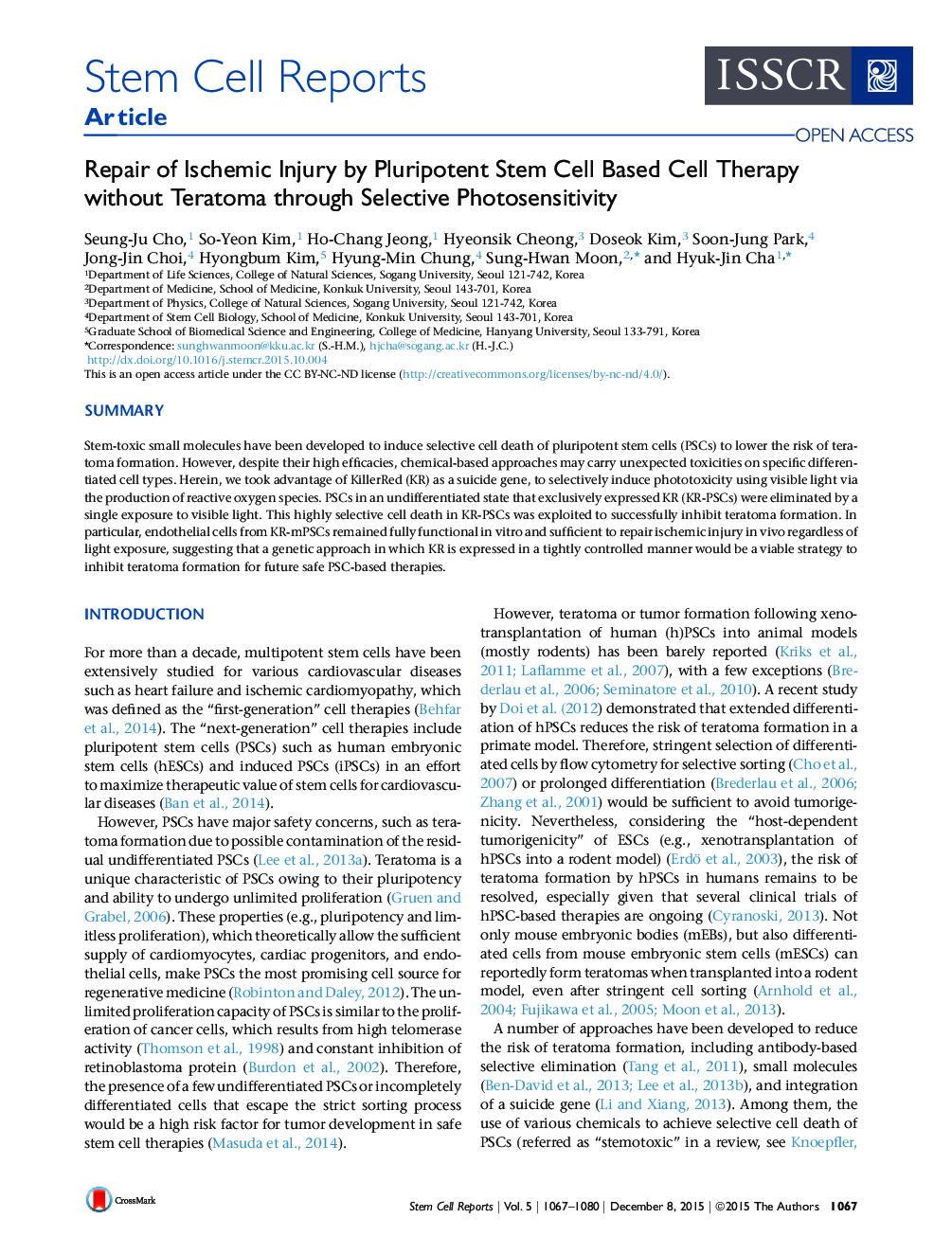| Article ID | Journal | Published Year | Pages | File Type |
|---|---|---|---|---|
| 2093708 | Stem Cell Reports | 2015 | 14 Pages |
•Pluripotent specific KR induces ESC specific cell death by light exposure•Specific cell death of KR-ESCs by light exposure inhibits teratoma formation•ECs from KR-ESCs remain fully functional in vitro and in vivo by light exposure
SummaryStem-toxic small molecules have been developed to induce selective cell death of pluripotent stem cells (PSCs) to lower the risk of teratoma formation. However, despite their high efficacies, chemical-based approaches may carry unexpected toxicities on specific differentiated cell types. Herein, we took advantage of KillerRed (KR) as a suicide gene, to selectively induce phototoxicity using visible light via the production of reactive oxygen species. PSCs in an undifferentiated state that exclusively expressed KR (KR-PSCs) were eliminated by a single exposure to visible light. This highly selective cell death in KR-PSCs was exploited to successfully inhibit teratoma formation. In particular, endothelial cells from KR-mPSCs remained fully functional in vitro and sufficient to repair ischemic injury in vivo regardless of light exposure, suggesting that a genetic approach in which KR is expressed in a tightly controlled manner would be a viable strategy to inhibit teratoma formation for future safe PSC-based therapies.
Graphical AbstractFigure optionsDownload full-size imageDownload as PowerPoint slide
